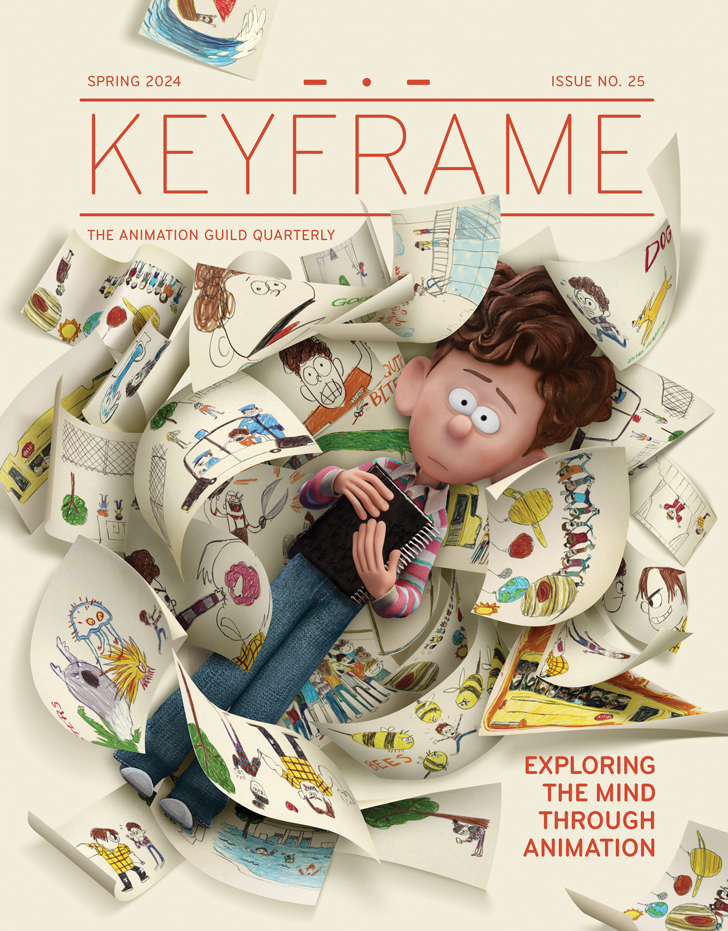Eighty-seven billion permutations. To be more precise: you would need to watch and play We Lost Our Human 87,178,291,200 times in order to experience every single combination of choices and the resulting outcomes of those combinations.
With a target audience of age seven and up, this interactive special stars two ordinary indoor house pets, Pud the Cat and Ham the Dog. When every human on earth disappears, including their owner, they must venture out into the world for the first time. As they travel through the universe to find their human, the choices they make have consequences. Or rather, the choices made by viewers on their behalf have consequences.
While interactive TV could be used as just another neat trick to keep audiences entertained, Rikke Asbjoern and Chris Garbutt feel differently. The pair created, wrote, directed, and executive produced We Lost Our Human, and Garbutt says: “We wanted to avoid the format feeling gimmicky. We wanted it to feel like it was intrinsic to the actual narrative.”
Coming off Pinky Malinky, which they also created, in July 2018, they heard that Netflix was looking to do something interactive. They’d been toying with an idea Asbjoern had done on Instagram—a kind of choose your own adventure comic. They pitched their idea and started work in October. They were excited to try something that could only exist in the interactive format, but at the same time they didn’t want to backward engineer a show. For them, story came first. “Animals looking for their owner—it’s something everyone can connect to and relate to and easily understand,” Garbutt says.
The pair started with a traditional linear outline and an emphasis on character development. “You fall in love with the characters because of who they are, not necessarily because you’ve made decisions for them,” Garbutt says.
To achieve this goal, they had to make sure every choice option was character-driven. This wasn’t as hard as it sounds, Asbjoern says, “because everything that you do in a day, you’re going to have choices. Both of those choices can be very true to you, but you’re only going to end up doing one of them.” With this in mind, Asbjoern and Garbutt made sure every option felt true to the characters. The scope of these choices ranged from the butterfly effect of picking up a specific small item to morally questionable choices, “to let you explore that and go as dark as you want to … within the realms of family TV, of course,” Garbutt says.
When asked how this all adds up to those 87 billion-plus possibilities, Asbjoern says, “A variation can be just one second, and I guess as soon as you start playing with the math and multiplying, it goes out of control.”
Logistically, as they figured out the storyline, Post-it Notes and index cards covered the wall. From there they built in the interactive components, beginning to decide where choice points would land. Narrative design consultants who had worked on video games helped. “Something they brought to the table that was super important was that every single choice you make needs to be paid off in some way—even if it’s minute,” Garbutt says. They wanted viewers to have “aha” moments, realizing that what’s happening now is because of an earlier choice they made, Asbjoern adds.

In working with choice points, Asbjoern and Garbutt had to contend with technical parameters, especially in regard to frequency. Choice points could be no less than 30 seconds apart and no more than four minutes apart. Less than 30 seconds means there’s not enough time while the viewer’s choice is buffering. More than four minutes poses the risk of the viewer losing interest and putting down the remote.

The trick was to balance this technical scaffolding with keeping the story flowing. Each time the story buffers, the narrative needs to keep moving. Asbjoern says this is a little bit easier when working with two characters—they can talk and debate during the time it takes the viewer’s choice to kick in.
While technology necessarily encroached on the creative side, Garbutt notes: “That’s animation anyway. You’re always dealing with technical versus creative. You find different ways to make it work.” In this case, the biggest challenge was figuring out the pipeline because the interactive format hasn’t been approached on this scale before in animation. While they found this exciting, they emphasize that story will always be of utmost importance. “Thematically, it’s about a family,” Garbutt says. “Sibling rivalry.”

Ham is brought into the happy home of Pud and the human, and Ham and Pud have to figure out their place in their family structure, “to find themselves and how they work with one another,” Asbjoern says. They have to disagree and make choices together, and in this respect, Asbjoern and Garbutt hope their show mirrors the experience the audience has while watching it. They want families to watch together and have them be not only interactive with the content, but also interactive with each other.
Garbutt notes that modern viewing habits can be quite solitary, and Asbjoern adds, “I think people need to have some fun together. We hope this could help bring that back a bit.”











.png)